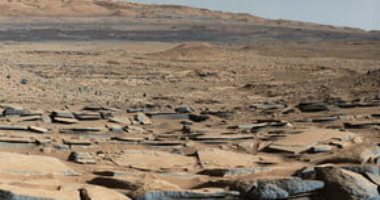Amira Shehata wrote Friday, October 27, 2023 07:00 AM
Scientists have discovered the remains of ancient river systems that once had the right conditions to support… Life on Marswhere researchers at Pennsylvania State University reanalyzed data collected by NASA’s Curiosity rover in Gale Crater, and found that the formations were habitable bodies of water and much more abundant than previously thought.
According to the British newspaper “Daily Mail”, the team identified shallow areas and short hills they call “noses” within the landscape that could be indicators of ancient river deposits in the holes.
The researchers said they also believe these bodies of water behave like those on Earth, and are important for life, chemical cycles, nutrient cycles and sediment cycles.
“We found evidence that Mars was likely a planet of rivers,” said Benjamin Cardenas, assistant professor of Earth sciences at Penn State and the lead researcher. “We see signs of that all over the planet.”
The study was conducted by mapping the erosion of ancient Martian soil using a computer model trained on satellite data. The data came from NASA Curiosity and a 3D scan of rock layers called strata that were deposited over millions of years under the sea floor of the Gulf of Mexico.
In designing their computer model, Cárdenas and his team found a new use for 25-year-old stratigraphy scans collected by oil companies. The survey, Cárdenas said, “provided a perfect comparison with Mars.”
The team simulated Mars-like erosion using 3D scans of actual layers recorded on Earth. When they ran the simulation, the model revealed an eroded Martian landscape that formed topographic benches and noses instead of river ridges, and looked almost identical to the landforms observed by the Curiosity spacecraft. Inside a generation nozzle.
The analysis revealed a new explanation for common Martian crater formations, which, until now, have never been associated with eroded river sediments, the researchers said.
For his part, Cárdenas said: “We have everything to learn about Mars by better understanding how to interpret these river deposits, and by thinking of rocks today as layers of sediment accumulated over time.”

